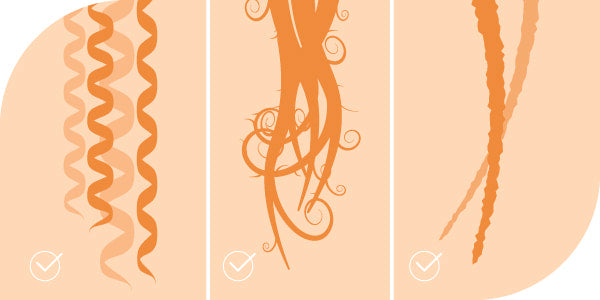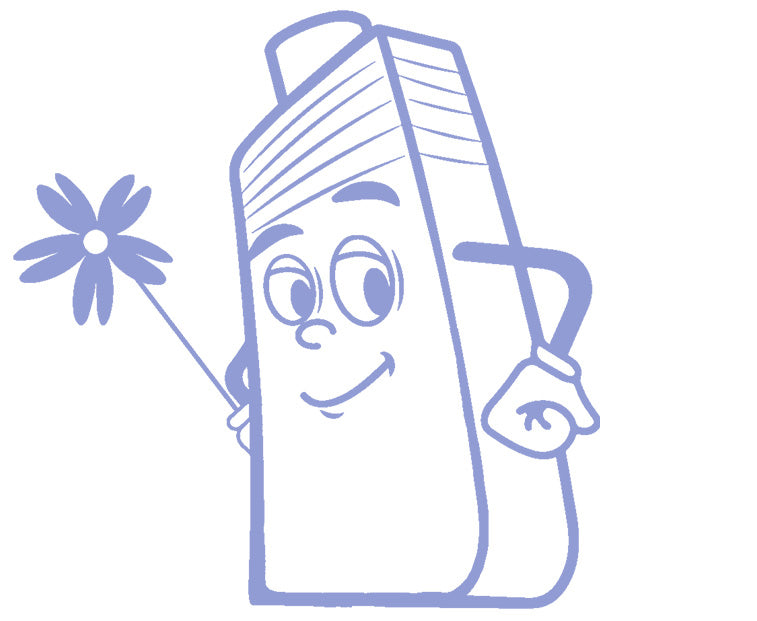Co-washing has become increasingly popular recently, especially among those with curly, wavy, or coily hair types. In this blog post, I’ll go over what co-washing is, its pros and cons, who can benefit from it, which hair types might not be suitable for it, the difference between low-poo shampoo and co-wash, ingredients to look for, and how to use co-wash.
Index
What Is a Co-Wash?
Co-washing hair is a method of washing your hair using only conditioner instead of shampoo. The idea behind co-washing hair is that most shampoos are too harsh for everyday use on dry hair types like curly or coily hair. So, co-washing helps gently cleanse and moisturize the hair simultaneously.
It’s important to note that not all conditioners are appropriate as co-wash products. Some conditioners contain ingredients, such as silicones, that can create buildup on the hair. When co-washing hair, it’s best to use a conditioner specifically formulated for this purpose or at least one that is silicone-free and lightweight.
While co-washing hair with a regular conditioner can be an excellent option for curly hair, a special co-wash product like Curl Crush™ Co-Wash can provide even better results. These products are formulated specifically for co-washing hair. They’re more lightweight than conditioners, and contain ingredients that can improve the cleansing process, making them a more practical choice for those who want to try co-washing. Also, co-washing conditioners can help prevent product buildup and leave your curls feeling refreshed.
Need help finding the right product? Keep reading, because we’re going to share my tips for finding the best co-wash for curly hair.
Pros and Cons of Co-Washing Hair
Like anything, there are pros and cons to co-washing.
So let’s start with the pros:

1. Conditions, Nourishes, and Moisturizes Hair While Cleansing
Co-washing can help to add moisture and shine to curly or coily hair, which is especially prone to dryness, dullness, and damage.
2. Doesn’t Strip Your Hair
Traditional shampoos can be harsh on curly hair, leaving it stripped and dry. Co-washing helps maintain your hair's natural oils, leaving it feeling softer and more manageable.
3. Prevents Breakage and Frizz
Because co-washing hair is a gentler method of washing your hair, it can help to avoid breakage and frizz.
Now, let’s take a look at the cons:

1. It Can Create Buildup Over Time
Co-washing hair can create buildup on the hair over time, especially if you don’t sometimes use a clarifying shampoo. This buildup can make hair look stringy and lank.
2. It’s Not Effective for All Hair Types
While co-washing can be great for those with curly, dry or damaged hair, there might be better options for those with oily or fine hair. Additionally, those with scalp conditions such as dandruff might not find it effective enough for cleansing their scalp.
Who Can Benefit from Co-Washing?

Co-washing can be highly beneficial for those with curly, wavy, or coily hair types, as these hair types tend to be more prone to dryness and damage. Traditional shampoos can be too harsh for these hair types, leading to dryness and frizz. Co-washing, however, allows you to cleanse your hair without stripping it of its natural oils, leaving your curls feeling soft, moisturized, and healthy. (Hint: if you have curly hair, check out this post on the best products for curly hair.)
Similarly, those with dry, coarse, or frizzy hair can benefit from co-washing. These hair types tend to be more prone to breakage and frizz and can benefit from the added moisture that co-washing provides. In addition, co-washes can help nourish and strengthen the hair, making it more resilient and less prone to breakage.
High-porosity hair is also well-suited for co-washing. High-porosity hair has gaps in the cuticle layer, allowing moisture to escape easily. Using a co-wash can help seal these gaps and retain moisture in the hair, leading to healthier, more manageable curls.
Co-washing can be a great option for those who like to wash their hair frequently, such as those who exercise a lot. Shampooing too often can leave hair dry and prone to breakage. Co-washing allows you to rinse away sweat and sebum without drying out the hair, making it a gentler option for those who like to wash their hair often.
Finally, co-wash products can be helpful for those with dry scalps. Traditional shampoos can be harsh and drying, exacerbating dryness and flakiness. Co-washing, on the other hand, can help soothe and moisturize the scalp, reducing dryness and flakiness over time.
Which Hair Types Should Avoid Co-Washing?
While co-washing can be great for some hair types, there might be better options for some. For example, those with fine, thin, or straight hair might find that it leaves their hair weighed down or greasy-looking. Additionally, those with oily, flaky, or irritated scalps should avoid co-washing or focus on getting their scalp in balance first.
If you have greasy or oily hair, check out this post on the best shampoos for greasy or oily hair.
Low-Poo Shampoo vs. Co-Wash
Both low-poo shampoos like Curl Crush™ Shampoo and co-wash products are designed to be gentle on curly hair and are typically free of sulfates, silicones, drying alcohols and mineral oils. Both products are Curly Girl-approved as well. However, there are some key differences between the two products.
Low-poo shampoos contain more cleansing agents and surfactants (although very gentle ones) than co-wash products. They are designed to remove dirt, residue, and oils more effectively, providing a deeper cleanse.
Co-wash products, on the other hand, are formulated to condition and moisturize the hair while cleansing it gently. They typically contain gentle surfactants, humectants, and moisturizing ingredients like avocado oil and aloe vera.
Many people with curly hair like to use both low-poo shampoos and co-washes interchangeably, alternating between them to keep the hair and scalp healthy and clean.
How to Find the Best Co-Wash for Curly Hair
The best co-wash products are formulated to cleanse and condition the hair simultaneously, and it's important to look for specific ingredients that can help achieve this. Here are some of the key ingredients to look for in a co-wash for curly hair:
- Gentle surfactants – The best co-washes for curly hair use mild surfactants that are less stripping than traditional shampoos. One popular surfactant used in co-washes is coco-glucoside, a gentle, plant-derived cleansing agent that effectively removes impurities without stripping the hair of its natural oils.
- Humectants – Humectants are ingredients that attract and retain moisture. Glycerin is a common plant-derived humectant used in co-washes for curly hair. It helps to hydrate and soften the hair, making it easier to manage and style.
- Moisturizing and nourishing ingredients – Co-washes for curly hair should also contain ingredients that help to moisturize and nourish the hair. Avocado oil is a popular ingredient, as it is rich in fatty acids that help to hydrate and strengthen the hair. Aloe vera is another excellent ingredient that can help soothe and moisturize the scalp while promoting healthy hair growth.
- Strengthening and repairing ingredients – Some of the best co-wash products contain strengthening and repairing ingredients, such as Anagain™. Anagain™ is a patented ingredient derived from pea sprouts clinically shown to increase hair density and thickness. As a result, it can help strengthen the hair and prevent breakage while promoting healthy hair growth.
When it comes to shopping for the best co-wash for curly hair, you should avoid certain ingredients that can lead to buildup and prevent proper hair and scalp cleansing. Here are some ingredients to avoid in a co-wash for curly hair:
- Silicones – Silicones are often found in hair products, as they create a barrier on the hair that helps to prevent moisture loss and provide shine. However, they can also lead to buildup over time, making it difficult for other products to penetrate the hair shaft. Therefore, it's essential to choose a product free of silicones or any other ingredients that end in -cone, -conol, or -siloxane. To learn more about why you should avoid silicones, read this post on silicone-free shampoos and conditioners.
- Heavy products with a high oil content – While oils can benefit dry hair, heavy products with a high oil content may not work well as a co-wash. They can weigh down the hair and make it difficult to properly clean. Instead, look for lightweight, water-based products that contain beneficial ingredients but don't leave a heavy, greasy residue.
How to Use Co-Wash: Step By Step
Learning how to use co-wash is different compared to using a traditional shampoo, but it is still easy to do with the following step-by-step guide.
How to Use Co-Wash Step 1: Wet Hair
Start by thoroughly wetting your hair in the shower. Make sure your hair is thoroughly soaked to ensure the co-wash can spread easily throughout your hair.
How to Use Co-Wash Step 2: Apply Co-Wash Product
It's important to apply it like a shampoo and focus on the scalp area, rather than the ends of your hair.
How to Use Co-Wash Step 3: Massage Well
Massage your scalp and hair gently with your fingertips for a minute or two. Co-washes do not contain foaming agents like shampoos, so it's necessary to work the product into your hair manually. Or give your fingers a break by using a Scalp Delight™ Scalp Massage Brush, which has soft silicone bristles that scrub and exfoliate while boosting circulation to the roots.
How to Use Co-Wash Step 4: Rinse Carefully
Make sure to rinse your hair thoroughly with lukewarm water to avoid leaving any residue behind.
How to Use Co-Wash Step 5: Repeat
Depending on how much build-up you have in your hair, you might need to repeat the process to get the best results.
How to Use Co-Wash Step 6: Condition
After using a co-wash for curly hair, you can follow up with a hair mask like Curl Crush™ Hair Mask or conditioner like Curl Crush™ Conditioner to help keep the lengths of your hair hydrated, especially if you have curly or coily hair.
How to Use Co-Wash Step 7: Style
Once you have rinsed your hair, you can style your hair as usual. If you have curly hair, I recommend applying Curl Crush™ Defining Cream, Defining Gel or Mousse to help bring out your curls. Allow your hair to air dry, or use a hairdryer with a diffuser to dry your hair if necessary.
By following these simple steps, you can effectively use a co-wash to cleanse your hair. Remember to choose a co-wash containing the right ingredients to help you achieve the best results.
Tips & Tricks for Using a Co-Wash
Here are some additional tips and tricks for using a co-wash:
- Start with a clean slate – If you've been using hair products with heavy silicones or oils, it's best to clarify your hair with a product like Scalp Delight™ Detox Scrub or another clarifying shampoo before starting a co-wash routine. This will help remove any buildup and prepare your hair for the co-wash.
- Don't skimp on the product – As mentioned earlier, co-washes don't contain foaming agents like traditional shampoos, so you'll need to use more product than you're used to.
- Experiment with frequency – The frequency of co-washing varies from person to person. Some people may need to co-wash every other day, while others may only need to do it once a week. Some people like to wash their curls with a low-poo shampoo once a week and refresh their hair one or two times during the week with a co-wash. Experiment with different frequencies to see what works best for you. Regardless of your routine, I recommend using a clarifying shampoo at least every 10-14 days to avoid buildup.
- Use a bamboo towel – After washing your hair, use a bamboo towel to gently blot excess water from your hair. This will help reduce frizz and breakage compared to using a traditional towel.
- Protect your hair at night – Sleeping on a silk or bamboo pillowcase or using a hair bonnet for sleeping can help protect your hair from breakage and preserve your curls.
By following these tips and tricks, you can ensure that your co-washing routine is effective and beneficial for your hair.
In conclusion, co-washing can be a great option for those seeking a gentle cleansing alternative to traditional shampooing. You can achieve clean, hydrated, and healthy hair by choosing the best co-wash with the right ingredients and following the proper usage techniques. Remember to consider your hair type, porosity, and individual needs when selecting the right product, and be patient as you figure out what works best for you. With the tips and tricks outlined in this post, you'll be well on your way to a successful co-washing routine that leaves your locks healthy and moisturized.































































